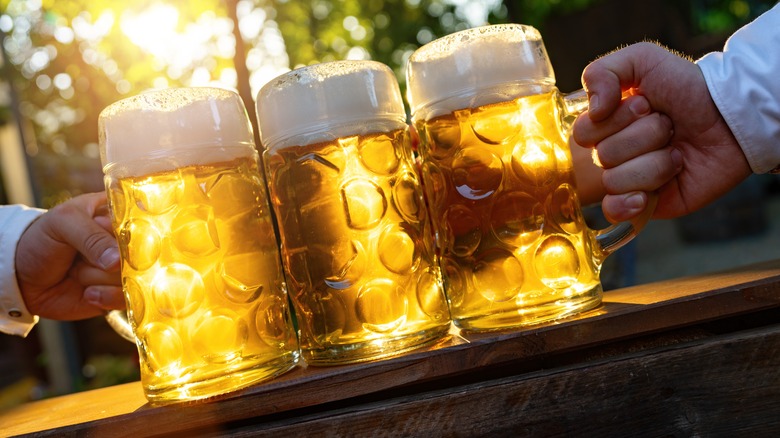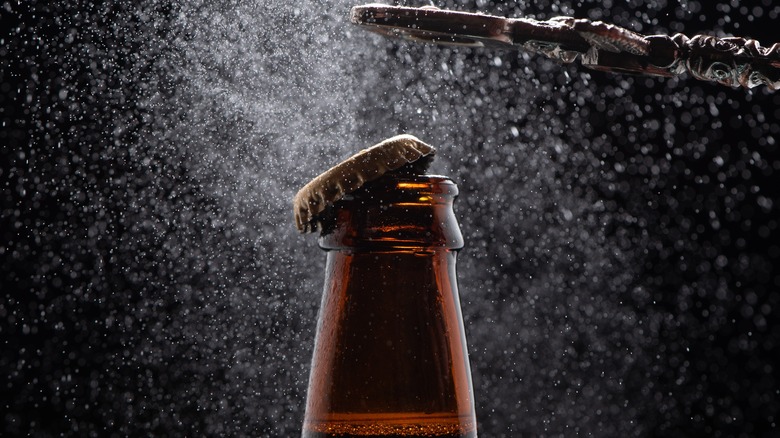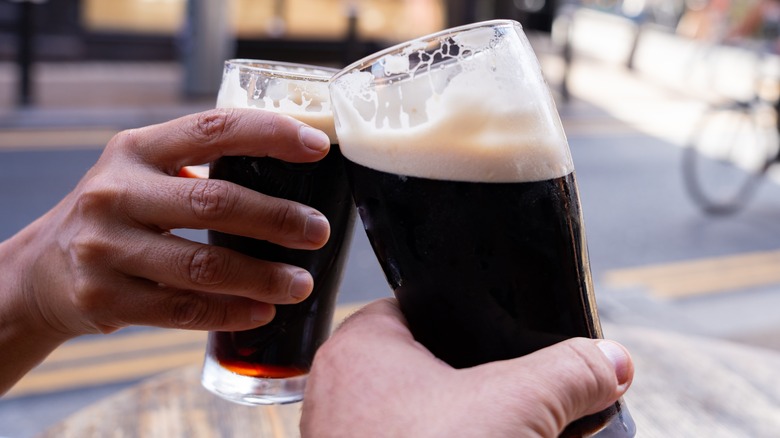Ever Wonder If Uncarbonated Beer Is A Thing?
We'll be the first to admit, a flat beer sounds unappealing at first. The idea of an uncarbonated beer brings to mind pints that have been sitting out for hours and unappetizing, flabby pours sent back to the bartender. After all, carbonation makes beer effervescent and refreshing while releasing the aroma as it fizzes. Think of a light, zesty Mexican lager like Corona without carbonation. It just wouldn't be the same.
Just as wine is enjoyed both sparkling and still, it's also possible for beers to have a variety of carbonation levels. A lightly carbonated beer may be preferable for people who feel bloated or have gastrointestinal discomfort after drinking highly carbonated beverages, those who have undergone bariatric surgery, people with irritable bowel syndrome, or those who just want to try something different.
Due to the fermentation process, it isn't possible to make a beer completely carbonation-free. Nevertheless, it is possible to make one that is lighter in carbonation. To understand how and why, we'll need to dive a bit deeper into how beer is brewed.
Where carbonation in beer comes from
Beer gets its carbonation naturally through fermentation, artificially through force, or through a combination of both. After beer goes through the initial brewing steps to break down the grains into sugars, separate the solids, and infuse hops, it is cooled in preparation for the fermentation phase. Then, yeast is added, which transforms the sugars into carbon dioxide and alcohol. In a sealed vessel, the CO2 doesn't have an escape route, so it is reabsorbed into the beer in its liquid form — carbonic acid. This compound is particularly friendly with compounds that produce flavor and aroma, which makes a difference later when the beer is opened and consumed.
After fermentation and subsequent steps such as conditioning and filtering, brewers can add CO2 into beer via force carbonation at low temperatures and high pressure. When beer is exposed to air as it's opened or poured, the liquid CO2 finally has somewhere to go, so it rises to the top and creates bubbles that pop and release aroma. (However, you may be interested to know that tapping on the top of a beer can might decrease the fizziness of your beer.)
Brewers can adjust these steps to achieve more or less carbonation. Beer drinkers can reduce the carbonation in their beer at home, too. Stirring beer, leaving it open in the refrigerator for a couple of hours, or decanting it between glasses can all give the CO2 bubbles more time to make their exit.
Types of beer with the least carbonation
Brewers use a variety of techniques to achieve more lightly carbonated brews, and some even prefer it. Nowhere is this more apparent than the category of "real ale," which has a whole consumer organization called the Campaign for Real Ale (CAMRA) behind it. Real ales are bottled with residual yeast and enough sugar for it to feed on and make carbon dioxide right in the container — without forced carbonation. The result is a lightly carbonated beer with complex flavors and aromas.
The CO2 in beer can be measured with a gadget called a Zahm, and the levels in real ales measure 1.0 volumes of CO2 per pint or less. By comparison, a classic Budweiser has 2.71 volumes of CO2 per pint. There are also a variety of beers that fall between real ale and Budweiser, including those that employ wild fermentation and aren't highly force carbonated like funky and semi-rare lambics, some sours, and barleywine. Nitro beers, like the ever-popular Guinness, are also an option for those seeking a less carbonated beer, as its tiny, smooth bubbles and creamy texture come from nitrogenation instead of forced carbonation.


